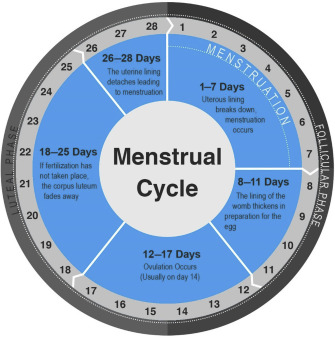Predicting the fertile period is a real gamble that fails almost 30% of the times. It is therefore imperative that you use more than one natural means to improve your chances of preventing a pregnancy if that is your intent. Determining when it is safe of unsafe to have unprotected sex requires a complicated calculation which we will talk about in this article.
To understand the details in this article, you would need to catch up in the earlier article. Click here…
The first day of your menstrual cycle is the first day of your period. Day one is the only fixed point in the menstrual cycle; all other points vary subtly or overtly depending on how regular or irregular your cycle is.
Determining the safe and unsafe period, begins with records of at least 6 months to one year. The longer the record period the more likely the predictions will be accurate.
To determine your first fertile day:
Identify your shortest cycle from past records and subtract 18 from the total days in that cycle.
Count that number from day 1 of your current cycle, and take note of that day, because that marks the first fertile day.
For instance, if your shortest cycle is 26 days, subtracting 18 leaves you with 8. Counting 8 days from day 1, with day 1 included in the count, takes you to day 8 as your first fertile day.
To predict your last fertile day:
Identify your longest cycle from your records and subtract 11 from the total days in that cycle.
Count that number from day 1 of your current cycle and marked that day as your last fertile day.
For example, if your longest cycle is 30 days, subtracting 11 leaves you with 19. Counting 19 days from day 1, mark that as your last fertile day.
 So let’s assume that day 1 was on the 3rd of the month, it would mean that your first fertile day would fall on the 10th of the month and the last fertile day would fall on the 21st of the month. If you were to have unprotected sex between the 10th of the month to the 21st of the month, there is a high risk of pregnancy, ie unsafe period, while unprotected sex between the 3rd and the 9th or from the 22nd till the next cycle begins would not result in pregnancy.
So let’s assume that day 1 was on the 3rd of the month, it would mean that your first fertile day would fall on the 10th of the month and the last fertile day would fall on the 21st of the month. If you were to have unprotected sex between the 10th of the month to the 21st of the month, there is a high risk of pregnancy, ie unsafe period, while unprotected sex between the 3rd and the 9th or from the 22nd till the next cycle begins would not result in pregnancy.
The calendar method estimates likely safe and unsafe days but doesn’t precisely determine fertility. It’s less effective for irregular cycles or cycles shorter than 27 days. Combining it with other fertility awareness methods like temperature and cervical mucus tracking enhances effectiveness.







